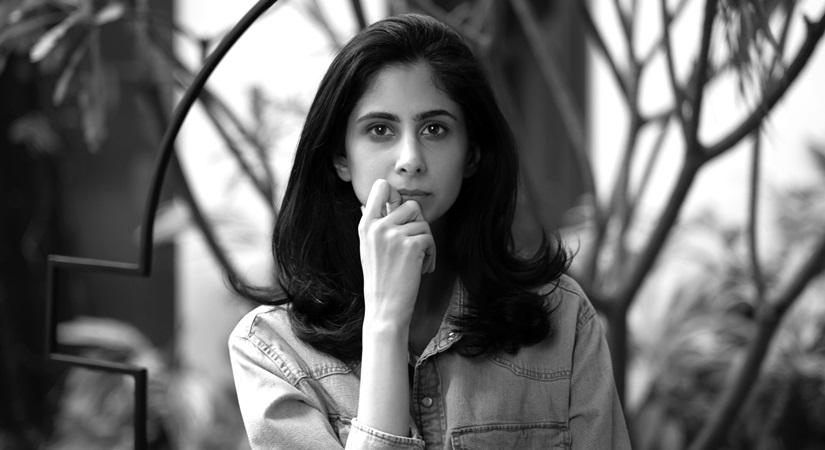Cover Story
Collaboration expands the mind and experience process through a new lens: Artist Ayesha Singh

The work is a result of research into the modern usage of antiquarian classical structures
BySukant Deepak
July 17, 2022 (IANSlife) It was during the lockdown in May 2020 when Covid-19 hit the Indian art community hardest --- with little assistance emerging from multiple state akademis or the corporate sector that artist Ayesha Singh along with Purvai Rai founded Art Chain India (ACI), an artist-led space for artists, initially as an alternative marketplace and peer-support system on Instagram, which today has more than 17,400 artworks that have been uploaded by artists for sale.
They were soon joined by Radha Mahendru, who started 'The Review Chain', and Veerangana Solanki, who began 'Art Chain Legal' with entities that expand the work ACI does and the ways in which they can assist, support, and protect artist practices.
"Together, we work with several artists, architects, curators, gallerists, lawyers, and writers to create structures where artist practices can survive and thrive independent of previous systems," Singh tells IANS.
Enabled by the transparency provided by digital media, ACI is an online community for artists to receive consistent support while encouraging local assistance to form global solidarities between artist communities.
"We have also assisted with the initiation of Art Chain Bangladesh and Art Chain Pakistan, and are currently speaking with artists in Poland and Miami who are interested in starting art chains in their localities," she adds.
Singh, a pass-out from Chelsea College of Art and Design and Slade School of Fine Art in London, whose work 'Evolution: Classical Indian Historical Appropriation', is part of the upcoming show 'Infinite Reminders' (July 19-August 18) at Nature Morte in Delhi that traces the movement of the designs of the capitals on columns from the European Classical Order and from Mughal buildings from the 1560s, to their appropriation at her childhood home in New Delhi.
The work, a result of research into the modern usage of antiquarian classical structures to produce the ancient order as ornament is displayed horizontally and begins to resemble script.
"A viewer had once mentioned how the work goes from language to slang, or perhaps, it references the localization of an ideal," says Singh.
The artist works with drawings, performance, installation, sculpture, and video to question the assumed permanence of buildings and the histories omitted during construction, restoration and destruction subverts socio-political hierarchies, and highlights the assertion of established systems of power in architecture.
She says that looking at a particular building, especially one that is considered a monument, one may begin to notice architectural strategies that she/he is subconsciously aligned to.
"Do you walk a certain way in a certain space, are you quieter in certain areas, and how does your behavior alter when you approach a certain building? Often, there are strategies employed to make humans behave a certain way through the connotative embodiment an ornament, a material, the scale, and so on of a building may have held in the past and continues to perpetuate to this day. Those are the hints of intention in architectural design, in a larger scale city planning/urbanization too. This will reveal to you the ideologies of the people in power when the space was designed and built," says Singh, a pass-out from Chelsea College of Art and Design and Slade School of Fine Art in London.
With the underlying themes, including reality, truth, and dystopia in her practice, Singh asserts saying that an affinity toward recognizing patterns and understanding structure -- "this seems to underlie a lot of the work that I do".
She adds, "Something that creates the past and imagines a future while destroying all past systems."
Believing that collaboration is a great way to expand the mind and experience process through a new lens, she stresses that it has often led her to create work in spaces and materials that she may not have expected herself to engage with.
"Yet, it allows my practice and research to evolve outside of what an individual might limit themselves to."
Currently, at a residency in the house that Van Gogh lived at in London, artist Jyothidas K.V. and she are working on the third iteration of their collaborative project -- the first was in Delhi in 2019 and the second in Miami in 2021.
"We will be creating a series of interactive engagements titled 'Recipoems: Trails of Reciprocity', that involve a participatory performance sharing written and uttered words, poetry, prints, and potions."
(This article is website exclusive and cannot be reproduced without the permission of IANSlife)


